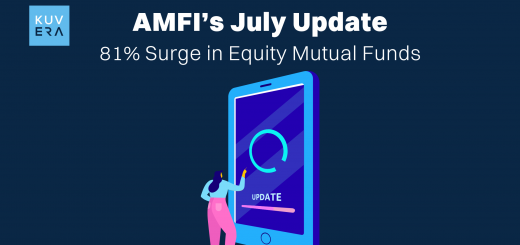In the intricate world of finance, where crores of rupees change hands and investment decisions shape the economic landscape, trust and transparency are the most important aspects.
So, how does one assess the creditworthiness of a company or a government entity seeking to raise funds?
This is where credit rating agencies in India can step onto the stage. They can act as independent arbiters of financial health. You can think of them as seasoned financial detectives, meticulously analysing balance sheets, scrutinising debt obligations, and ultimately assigning a grade that reflects the likelihood of timely repayment.
For investors, especially those navigating the complexities of the debt market, these ratings serve as invaluable compasses. They can guide them towards potentially safer investment avenues and away from those that carry a higher risk of default.
A favourable credit rating can unlock access to capital at more competitive rates, fostering business growth and expansion. Therefore, understanding the role and function of credit rating agencies in India is crucial for anyone involved in or interested in the Indian financial ecosystem.
How Credit Rating Agencies Operate
The process employed by credit rating agencies in India is a blend of rigorous quantitative analysis and qualitative judgment. It is not a simple box-ticking exercise but rather a comprehensive evaluation of an entity’s financial strength and its ability to meet its financial obligations. Here’s a glimpse into the main stages of their operation:
1. Information Gathering
There is the collection of a vast amount of information about the entity being rated. This includes financial statements (balance sheets, income statements, cash flow statements), operational data, management quality assessments, industry analysis, and macroeconomic factors that could influence the entity’s performance. Agencies often interact directly with the management of the rated entity to gain deeper insights into their strategies and risk management practices.
2. Quantitative Analysis
In this stage there is a thorough examination of the financial data. Analysts employ various financial ratios and models to assess the entity’s liquidity, solvency, profitability, and efficiency. They look for trends, compare the entity’s performance against its peers, and evaluate its ability to generate sufficient cash flows to service its debt.
3. Qualitative Analysis
While numbers provide a crucial foundation, qualitative factors play an equally important role. This can include an assessment of the management team’s experience and track record, the entity’s competitive position within its industry, regulatory risks, corporate governance practices, and any potential legal or environmental liabilities. Understanding the broader business environment and potential future challenges is essential for a holistic rating.
4. Assigning the Rating
Based on the comprehensive analysis, the credit rating agencies in India assign a credit rating. These ratings are typically represented by alphanumeric symbols, such as AAA, AA, A, BBB, BB, B, C, D, with AAA generally indicating the highest creditworthiness and D indicating default. Each rating category often comes with further subdivisions (e.g., AA+, AA, AA-) to provide a more granular assessment of credit risk.
5. Surveillance and Review
The rating process is not a one-time event. Credit rating agencies continuously monitor the financial health and relevant developments of the entities they rate. They conduct periodic reviews and may revise the rating based on significant changes in the entity’s financial condition, industry dynamics, or macroeconomic environment. This ongoing surveillance ensures that the ratings remain relevant and reflect the current credit risk.
Major Credit Rating Agencies in India and Their Roles
The credit rating agencies in India play distinct yet interconnected roles in maintaining the integrity of the financial system. Several prominent players operate in this space, each contributing to the overall assessment of credit risk.
Some of the major credit rating agencies in India are as follows:
1. CRISIL (Credit Rating Information Services of India Limited)
Established in 1987, CRISIL was the first credit rating agency in India. It provides a wide range of ratings across various sectors, including corporates, banks, financial institutions, and infrastructure projects. CRISIL is also involved in research and advisory services. Its long history and extensive experience have made it a well-respected and influential agency in the Indian market.
2. ICRA Limited (formerly Investment Information and Credit Rating Agency of India Limited)
Founded in 1991, ICRA is another significant player in the Indian credit rating landscape. It provides ratings for a diverse set of debt instruments and entities, including corporate bonds, commercial paper, bank loans, and structured finance transactions. ICRA’s ratings are widely recognised by investors and regulators alike.
3. CARE Ratings Limited (formerly Credit Analysis and Research Limited)
CARE Ratings commenced operations in 1993 and has established itself as a major credit rating agency in India. It can offer ratings across a broad spectrum of industries and debt instruments. CARE Ratings emphasises its rigorous and transparent rating process.
4. India Ratings and Research Private Limited (Ind-Ra)
A wholly-owned subsidiary of Fitch Ratings, Ind-Ra brings international expertise and methodologies to the Indian market. It provides credit ratings for various sectors and debt types, incorporating global best practices in its analysis.
5. Brickwork Ratings India Private Limited (BWR)
Established in 2007, BWR is a relatively newer but recognised credit rating agency in India. It provides ratings for a range of debt instruments, including bank loans and SME ratings, focusing on transparency and investor protection.
These agencies, while operating independently, are regulated by the Securities and Exchange Board of India (SEBI). The SEBI has put in place regulations to ensure the transparency, objectivity, and integrity of the credit rating process, thereby enhancing investor confidence and market stability. The presence of multiple credit rating agencies in India fosters a degree of healthy competition and encourages rigorous analysis.
Credit Ratings and Debt Funds in India
For investors in debt funds in India, credit ratings are an indispensable tool for evaluating the risk associated with their investments. Debt funds invest in a variety of fixed-income securities, such as corporate bonds, government securities, and commercial paper. The credit ratings assigned to these underlying securities by credit rating agencies in India provide an indication of the issuer’s ability to repay its debt obligations on time.
Here’s how credit ratings can impact debt mutual funds:
1. Risk Assessment
Higher-rated debt instruments (e.g., AAA, AA) are generally considered to carry lower credit risk, meaning there is a higher probability of the issuer meeting its payment obligations. Conversely, lower-rated instruments (e.g., BB, B) are associated with higher credit risk, indicating a greater chance of default. Debt funds holding a significant portion of lower-rated securities can be considered riskier.
2. Yield and Risk Trade-off
Generally, debt instruments with lower credit ratings can offer higher yields to compensate investors for the increased risk of default. Debt funds that invest primarily in lower-rated securities may offer potentially higher returns but also carry a greater risk of capital loss.
3. Fund Categorisation
SEBI has mandated that debt funds disclose the credit quality of their portfolios. This allows investors to understand the overall credit risk profile of the fund. Funds investing predominantly in high-rated securities are often categorised as lower-risk, while those with significant exposure to lower-rated papers are classified as higher-risk.
4. Investor Due Diligence
While credit ratings can provide a valuable assessment, they are not foolproof. Investors should not rely solely on ratings but should also conduct their own due diligence, considering factors such as the fund manager’s expertise, the fund’s investment strategy, and their own risk appetite.
5. Potential for Downgrades
It is important to remember that credit ratings are dynamic and can change over time. If the financial health of an issuer deteriorates, the credit rating agencies in India may downgrade the rating of its debt instruments. This can negatively impact the Net Asset Value (NAV) of debt funds holding those instruments.
Therefore, understanding credit ratings is essential for making informed investment decisions in debt funds. It allows investors to align their investments with their risk appetite and to have a clearer picture of the potential risks and rewards involved.
Wrapping Up
Credit rating agencies in India serve as vital pillars of the Indian financial system. They provide an independent and expert assessment of creditworthiness, contributing significantly to market transparency and investor protection. For individuals navigating the complexities of investments, particularly in debt funds, understanding the role and significance of credit ratings is paramount. While ratings are a valuable tool, they should be used in conjunction with other forms of due diligence. The dynamic nature of creditworthiness necessitates continuous monitoring and a comprehensive understanding of the factors that can influence an entity’s ability to meet its financial obligations.
In essence, credit rating agencies in India empower informed financial decision-making. They act as crucial intermediaries, bridging the gap between borrowers and lenders by providing a standardised and credible assessment of risk. As the Indian economy continues to grow and evolve, the role of these agencies in fostering a stable and transparent financial environment will only become more critical.
Interested in how we think about the markets?
Read more: Zen And The Art Of Investing
Watch here: Learn about the F&O craze in India












